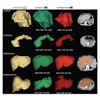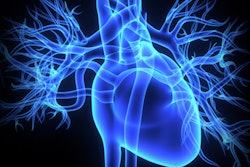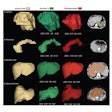Interventional radiology procedures such as common femoral artery access and subsequent closure put patients at risk of complications from accidental punctures. Increasingly more studies are showing that practicing these procedures on simulators beforehand helps enhance user confidence, decrease the rate of complications, and reduce procedural times, presenter Dr. Adriene Eastaway from the University of Utah School of Medicine told AuntMinnie.com.
In light of this growing body of evidence, Eastaway and colleagues developed a new haptic simulator for common femoral artery access using 3D printing and AR technology.
To make the simulator, the researchers acquired CT angiography (CTA) scans of patients and then used the imaging data to create individually tailored 3D-printed models of the common femoral artery and surrounding structures. The 3D-printed models contained biomaterials that replicated the texture of bone, vascular, and soft tissue. They also used the same CTA scans to generate AR models that users were able to visualize alongside the 3D-printed models when wearing an AR headset (HoloLens, Microsoft).
The group evaluated the quality of the simulator on fluoroscopy and ultrasound scans and found that the appearance of the structures realistically approximated actual patient anatomy. Trainees were able to practice common femoral artery access on the 3D-printed simulator while simultaneously being able to refer to the patient-specific AR models for anatomical reference.
"Our simulator combines the haptic feedback of a 3D-printed model and the augmented experience using HoloLens with a coregistered 3D patient model that projects over the simulator with the same patient-derived 3D data," Eastaway said.
Study disclosure: The group received the HoloLens AR headset from enterprise imaging vendor Novarad.



















